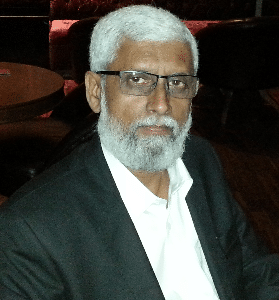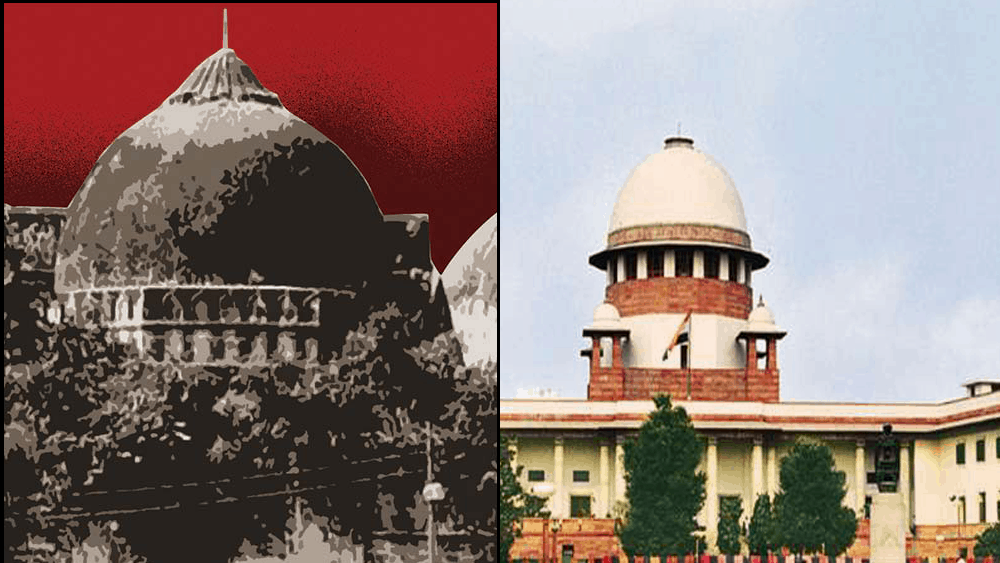
Shafeeq R. Mahajir
Courts decide according to law. Apprehension of violence is not the foundation of judicial pronouncements. That belongs to the Executive. When Executive cannot contain fall-out of a judgement according to law, Executive must be dismantled, President’s rule imposed, army called to maintain order. Judgements should demonstrate visionary judiciousness, wisdom and sagacity. This judgement demonstrates their absence.
Mosque was built say 1550s by Mir Baqi. Idols were ‘surreptitiously’ placed inside in 1949. ASI reported artefacts of “non-Muslim character” underneath Masjid. These did not establish either demolition or a Hindu temple. The placing of idols in Masjid in 1949 and its demolition in 1992, are held illegal.
The question before the Court was not whether it was a temple but whether this was a) birthplace of Ram and b) a temple was demolished to build the Masjid.
Neither claim was established. Destruction of a temple marking birthplace of figure as important to Hindu faith as Ram would not go unrecorded in history.
It is argued that mosque was built on a temple, used its ruins. Ruins are remnants of structure that has ceased to exist. Therefore, the claim that a temple was destroyed and the masjid built on that spot, is palpably incorrect. From 13th to 16th centuries (when masjid was built) there is no evidence of ownership. Therefore, it can be logically said the ruins were about 300 years old. Since it stood abandoned for three centuries we can conclude it was not a place of significance, or birthplace of Ram, son of King Dasarath, therefore, likely to have born in royal palace. Hindus consider “Ayodhya” as birth place of Ram. Ayodhya is a town of large dimensions. The claim the birthplace was under the central dome of the masjid was first mooted in 1989, never till then. I need not say more.
Structure like temple under the masjid cannot be basis of claiming ownership now, said SC. Whether it was a temple, destroyed to make way for a masjid was not only not established, it was recorded that the masjid was built on land that lay in ruins with no record of ownership for 300 years. So “ownership cannot be claimed on that basis now”. “Demolition was illegal and act of sacrilege”. Hardly legal basis for giving the claimants the land.
“Hindus prayed around the disputed site.” “Around” a site is not “at” a site. Title cannot be established by faith and belief. If ruins were of 300 year antiquity, Mir Baqi built Masjid in 16th century, for convenient calculation we take 1549. Idols were placed under central dome clandestinely in 1949. Is that not uninterrupted possession for 400 years?
Mosque was used as a public mosque till 1857. After that only Friday prayers were held till 1934. Therefore, for 308 years, say 1549 to 1857 it was used regularly as a masjid. From 1857 to (say) 1949, or 92 years, Friday prayers were held. 308 + 92 = 400 years. How long does possession have to be uninterrupted to satisfy the law?
“The Hindus continued to pray at the outer courtyard.” Operative words: “at” and “outer courtyard”. Beyond the Supreme Court there is no other adjudicating body. Court held possession of Muslims was “not uninterrupted”. Is one’s presence at an outer courtyard adequate to interrupt possession of another in inner courtyard? Useful for lawyers in future as binding precedent!
There was no exclusion of Hindus from inner courtyard. Hindus had unimpeded control over outer courtyard, never gave up claim over inner courtyard. Namaz never ceased in inner courtyard nor was it abandoned. If namaaz never ceased, nor was inner courtyard abandoned, how was possession by Muslims “not uninterrupted”? Not comprehending how both statements can be correct, I prefer to stop wondering. Easier on the brain.
“Damage to mosque and desecration is not as per rule of law. Muslims have been denied right to worship by demolition. SC has to remedy this wrong”. If Muslims were unable to establish possession of even inner courtyard, why was placing of idols under central dome a desecration? What does a Court do to remedy a desecration? “Muslims have been denied right to worship” is incorrect : they can worship anywhere. Denial is of the right to worship there, and that denial was by prevention by the authorities’ actions from time to time commencing with inaction in 1949, till illegal demolition. How is denial of right to worship at that spot remedied? By telling State to allocate alternative land? Well, the SC holds that adequate and proper. An extrapolation tells a lawyer where that leads to, so I will not go further.
Respecting Court decisions is a Constitutional imperative of citizenship. What is the Constitutional imperative of judicial office? Instead of law regulating public conduct, will majoritarian demand determine what courts shall decide?
Shafeeq R. Mahajir is a well-known lawyer in Hyderabad

